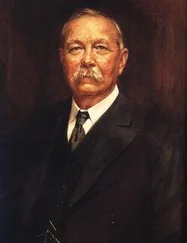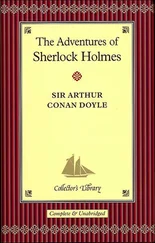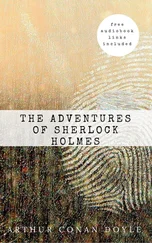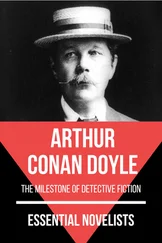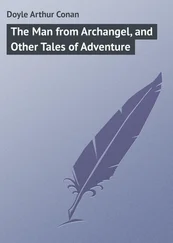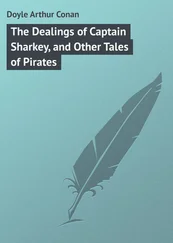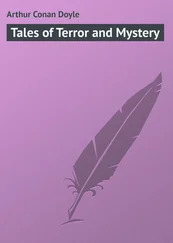Arthur Doyle - Tales of Terror & Mystery
Здесь есть возможность читать онлайн «Arthur Doyle - Tales of Terror & Mystery» весь текст электронной книги совершенно бесплатно (целиком полную версию без сокращений). В некоторых случаях можно слушать аудио, скачать через торрент в формате fb2 и присутствует краткое содержание. Жанр: Ужасы и Мистика, на английском языке. Описание произведения, (предисловие) а так же отзывы посетителей доступны на портале библиотеки ЛибКат.
- Название:Tales of Terror & Mystery
- Автор:
- Жанр:
- Год:неизвестен
- ISBN:нет данных
- Рейтинг книги:3 / 5. Голосов: 1
-
Избранное:Добавить в избранное
- Отзывы:
-
Ваша оценка:
- 60
- 1
- 2
- 3
- 4
- 5
Tales of Terror & Mystery: краткое содержание, описание и аннотация
Предлагаем к чтению аннотацию, описание, краткое содержание или предисловие (зависит от того, что написал сам автор книги «Tales of Terror & Mystery»). Если вы не нашли необходимую информацию о книге — напишите в комментариях, мы постараемся отыскать её.
Tales of Terror & Mystery — читать онлайн бесплатно полную книгу (весь текст) целиком
Ниже представлен текст книги, разбитый по страницам. Система сохранения места последней прочитанной страницы, позволяет с удобством читать онлайн бесплатно книгу «Tales of Terror & Mystery», без необходимости каждый раз заново искать на чём Вы остановились. Поставьте закладку, и сможете в любой момент перейти на страницу, на которой закончили чтение.
Интервал:
Закладка:
Tales of Terror & Mystery
by Arthur Conan Doyle
Tales of Terror
The Horror of the Heights
The idea that the extraordinary narrative which has been called the Joyce-Armstrong Fragment is an elaborate practical joke evolved by some unknown person, cursed by a perverted and sinister sense of humour, has now been abandoned by all who have examined the matter. The most macabre and imaginative of plotters would hesitate before linking his morbid fancies with the unquestioned and tragic facts which reinforce the statement. Though the assertions contained in it are amazing and even monstrous, it is none the less forcing itself upon the general intelligence that they are true, and that we must readjust our ideas to the new situation. This world of ours appears to be separated by a slight and precarious margin of safety from a most singular and unexpected danger. I will endeavour in this narrative, which reproduces the original document in its necessarily somewhat fragmentary form, to lay before the reader the whole of the facts up to date, prefacing my statement by saying that, if there be any who doubt the narrative of Joyce-Armstrong, there can be no question at all as to the facts concerning Lieutenant Myrtle, R. N., and Mr. Hay Connor, who undoubtedly met their end in the manner described.
The Joyce-Armstrong Fragment was found in the field which is called Lower Haycock, lying one mile to the westward of the village of Withyham, upon the Kent and Sussex border. It was on the 15th September last that an agricultural labourer, James Flynn, in the employment of Mathew Dodd, farmer, of the Chauntry Farm, Withyham, perceived a briar pipe lying near the footpath which skirts the hedge in Lower Haycock. A few paces farther on he picked up a pair of broken binocular glasses. Finally, among some nettles in the ditch, he caught sight of a flat, canvas-backed book, which proved to be a note-book with detachable leaves, some of which had come loose and were fluttering along the base of the hedge. These he collected, but some, including the first, were never recovered, and leave a deplorable hiatus in this all-important statement. The note-book was taken by the labourer to his master, who in turn showed it to Dr. J. H. Atherton, of Hartfield. This gentleman at once recognized the need for an expert examination, and the manuscript was forwarded to the Aero Club in London, where it now lies.
The first two pages of the manuscript are missing. There is also one torn away at the end of the narrative, though none of these affect the general coherence of the story. It is conjectured that the missing opening is concerned with the record of Mr. Joyce- Armstrong's qualifications as an aeronaut, which can be gathered from other sources and are admitted to be unsurpassed among the air-pilots of England. For many years he has been looked upon as among the most daring and the most intellectual of flying men, a combination which has enabled him to both invent and test several new devices, including the common gyroscopic attachment which is known by his name. The main body of the manuscript is written neatly in ink, but the last few lines are in pencil and are so ragged as to be hardly legible–exactly, in fact, as they might be expected to appear if they were scribbled off hurriedly from the seat of a moving aeroplane. There are, it may be added, several stains, both on the last page and on the outside cover which have been pronounced by the Home Office experts to be blood–probably human and certainly mammalian. The fact that something closely resembling the organism of malaria was discovered in this blood, and that Joyce-Armstrong is known to have suffered from intermittent fever, is a remarkable example of the new weapons which modern science has placed in the hands of our detectives.
And now a word as to the personality of the author of this epoch-making statement. Joyce-Armstrong, according to the few friends who really knew something of the man, was a poet and a dreamer, as well as a mechanic and an inventor. He was a man of considerable wealth, much of which he had spent in the pursuit of his aeronautical hobby. He had four private aeroplanes in his hangars near Devizes, and is said to have made no fewer than one hundred and seventy ascents in the course of last year. He was a retiring man with dark moods, in which he would avoid the society of his fellows. Captain Dangerfield, who knew him better than anyone, says that there were times when his eccentricity threatened to develop into something more serious. His habit of carrying a shot-gun with him in his aeroplane was one manifestation of it.
Another was the morbid effect which the fall of Lieutenant Myrtle had upon his mind. Myrtle, who was attempting the height record, fell from an altitude of something over thirty thousand feet. Horrible to narrate, his head was entirely obliterated, though his body and limbs preserved their configuration. At every gathering of airmen, Joyce-Armstrong, according to Dangerfield, would ask, with an enigmatic smile: "And where, pray, is Myrtle's head?"
On another occasion after dinner, at the mess of the Flying School on Salisbury Plain, he started a debate as to what will be the most permanent danger which airmen will have to encounter. Having listened to successive opinions as to air-pockets, faulty construction, and over-banking, he ended by shrugging his shoulders and refusing to put forward his own views, though he gave the impression that they differed from any advanced by his companions.
It is worth remarking that after his own complete disappearance it was found that his private affairs were arranged with a precision which may show that he had a strong premonition of disaster. With these essential explanations I will now give the narrative exactly as it stands, beginning at page three of the blood-soaked note-book:
"Nevertheless, when I dined at Rheims with Coselli and Gustav Raymond I found that neither of them was aware of any particular danger in the higher layers of the atmosphere. I did not actually say what was in my thoughts, but I got so near to it that if they had any corresponding idea they could not have failed to express it. But then they are two empty, vainglorious fellows with no thought beyond seeing their silly names in the newspaper. It is interesting to note that neither of them had ever been much beyond the twenty-thousand-foot level. Of course, men have been higher than this both in balloons and in the ascent of mountains. It must be well above that point that the aeroplane enters the danger zone–always presuming that my premonitions are correct.
"Aeroplaning has been with us now for more than twenty years, and one might well ask: Why should this peril be only revealing itself in our day? The answer is obvious. In the old days of weak engines, when a hundred horse-power Gnome or Green was considered ample for every need, the flights were very restricted. Now that three hundred horse-power is the rule rather than the exception, visits to the upper layers have become easier and more common. Some of us can remember how, in our youth, Garros made a world-wide reputation by attaining nineteen thousand feet, and it was considered a remarkable achievement to fly over the Alps. Our standard now has been immeasurably raised, and there are twenty high flights for one in former years. Many of them have been undertaken with impunity. The thirty-thousand-foot level has been reached time after time with no discomfort beyond cold and asthma. What does this prove? A visitor might descend upon this planet a thousand times and never see a tiger. Yet tigers exist, and if he chanced to come down into a jungle he might be devoured. There are jungles of the upper air, and there are worse things than tigers which inhabit them. I believe in time they will map these jungles accurately out. Even at the present moment I could name two of them. One of them lies over the Pau-Biarritz district of France. Another is just over my head as I write here in my house in Wiltshire. I rather think there is a third in the Homburg- Wiesbaden district.
Читать дальшеИнтервал:
Закладка:
Похожие книги на «Tales of Terror & Mystery»
Представляем Вашему вниманию похожие книги на «Tales of Terror & Mystery» списком для выбора. Мы отобрали схожую по названию и смыслу литературу в надежде предоставить читателям больше вариантов отыскать новые, интересные, ещё непрочитанные произведения.
Обсуждение, отзывы о книге «Tales of Terror & Mystery» и просто собственные мнения читателей. Оставьте ваши комментарии, напишите, что Вы думаете о произведении, его смысле или главных героях. Укажите что конкретно понравилось, а что нет, и почему Вы так считаете.

